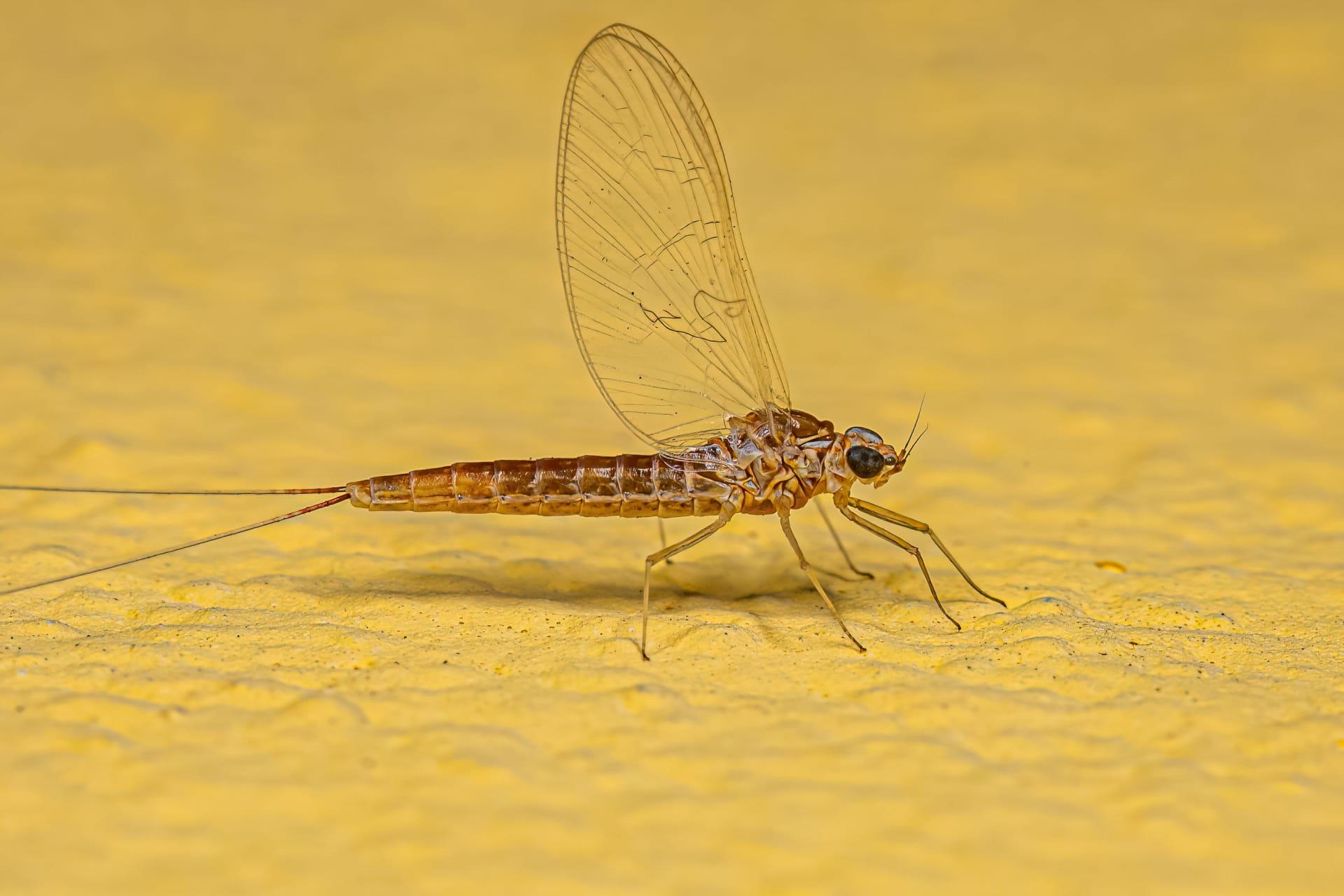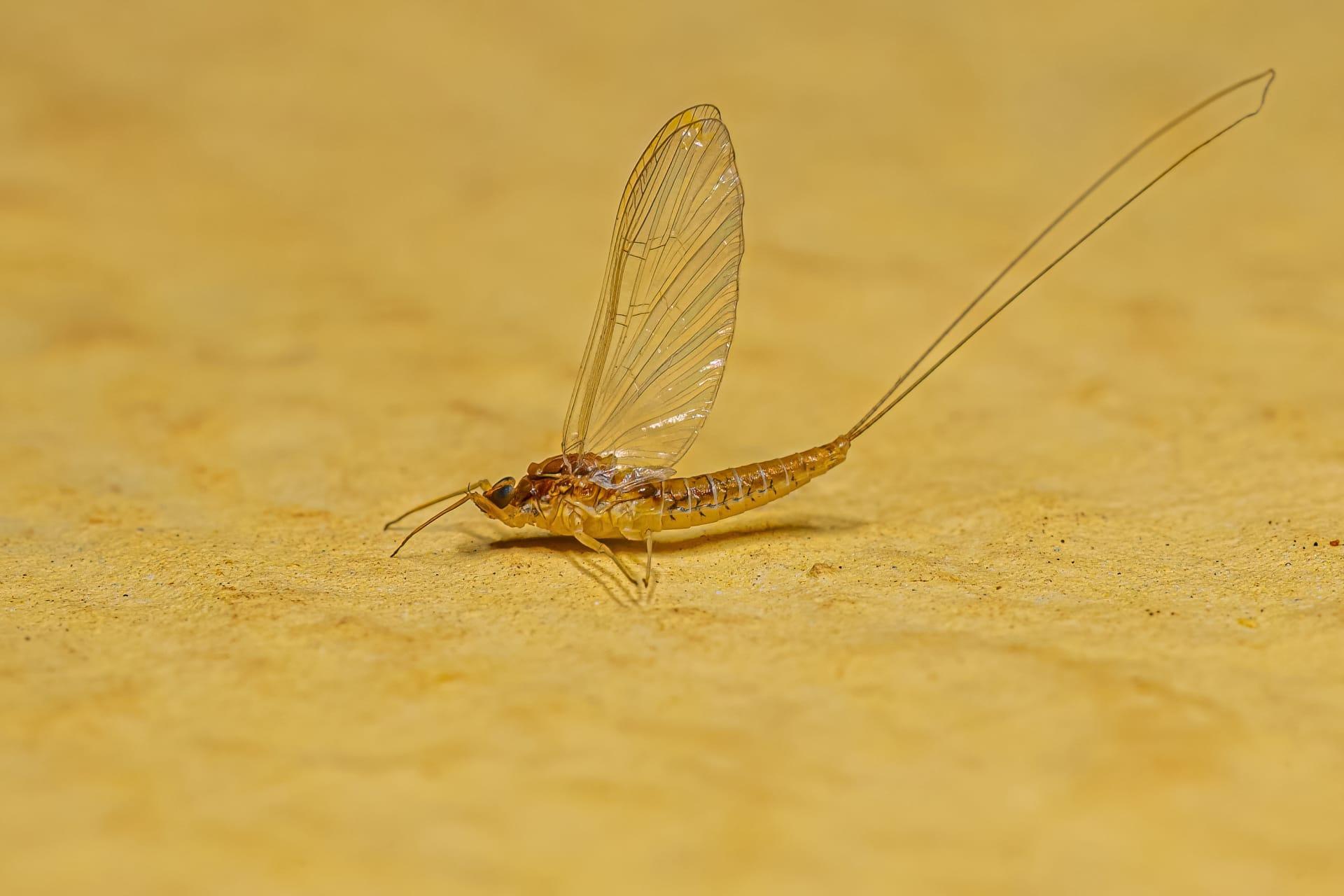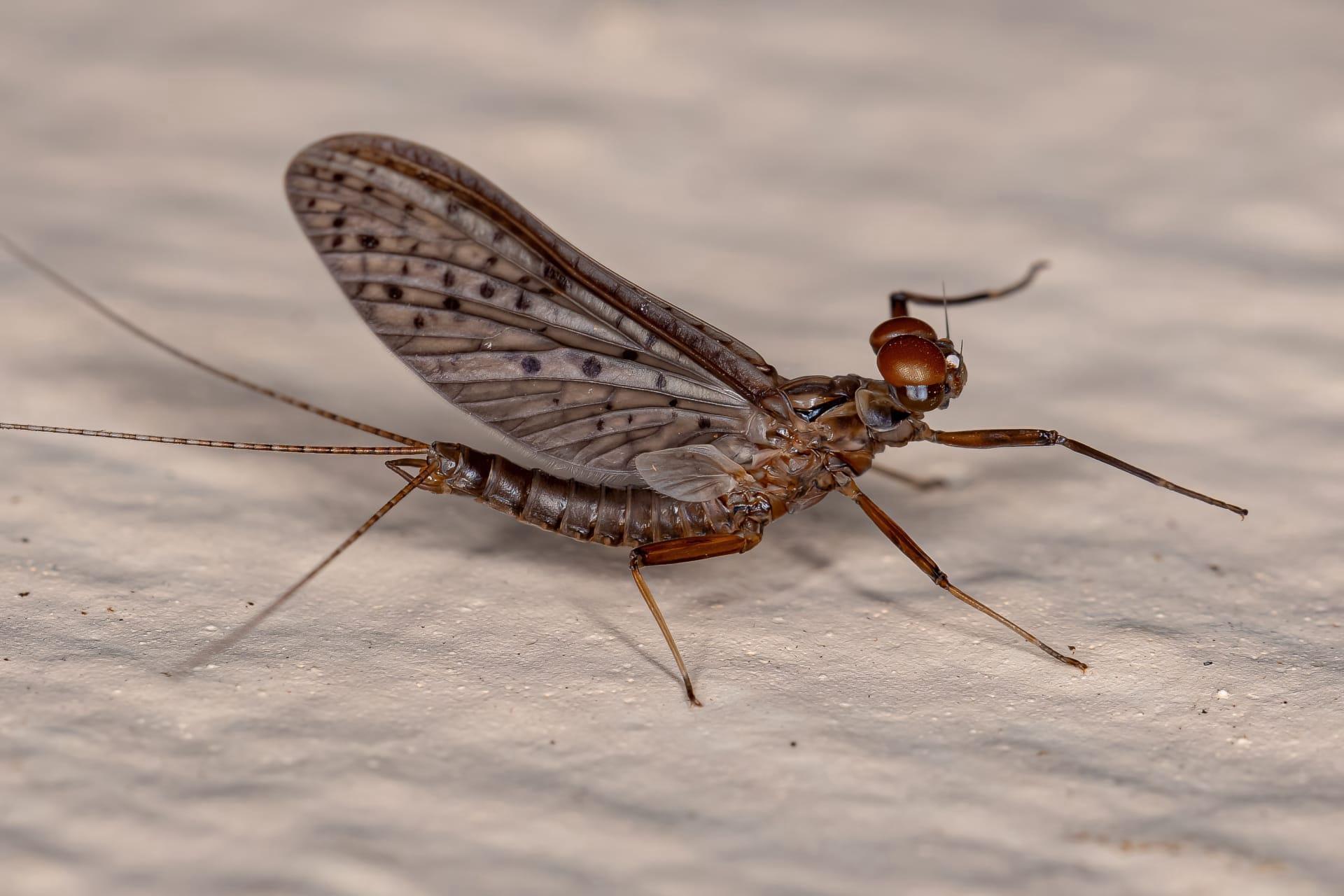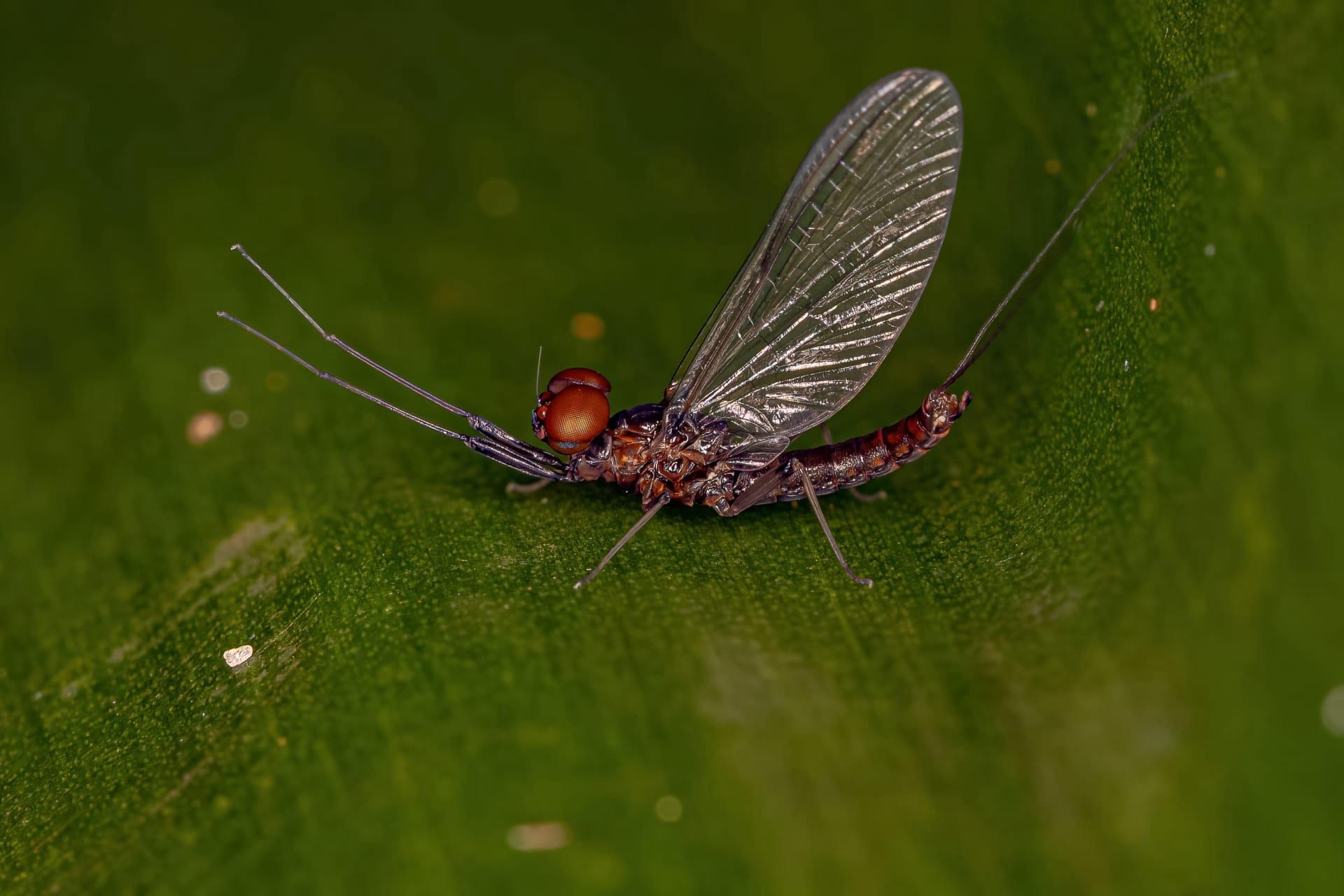Mayflies
- Home /
- Mini Encyclopedia /
- Animal /
- Mayflies
1
Mayflies, known scientifically as Ephemeroptera, belong to a unique and ancient order of insects. This order is characterized by their remarkably short adult lifespan and delicate wings. Ephemeroptera is derived from Greek, meaning 'short-lived wing,' referring to their brief adult stage. There are over 3,000 known species of mayflies, categorized into over 400 genera and 42 families. These species vary in size, with body lengths ranging typically from 3 to 30 millimeters, and they exhibit a range of colors from dull browns and greens to vibrant yellows and reds, adapting to their specific environments.
Mayflies have a worldwide distribution, thriving in a variety of aquatic habitats. They are most commonly found near clean, freshwater sources such as rivers, streams, and lakes. Their presence is often considered an indicator of good water quality, as they are sensitive to pollution and changes in their environment. The larvae, or nymphs, of mayflies live underwater for periods ranging from a few months to several years, depending on the species. North America alone is home to over 600 species of mayflies, while Europe has around 300 species. Tropical regions tend to have a higher diversity, though less overall abundance compared to temperate zones.

2
Question: Do mayflies only live for a day?
Answer: This is a common misconception about mayflies. While it's true that adult mayflies have an extremely short lifespan, often living for just 24 to 72 hours, this is only a tiny fraction of their overall life cycle. The majority of a mayfly's life is spent in its aquatic nymph stage, which can last anywhere from several months to a couple of years, depending on the species. During this time, mayflies undergo numerous molts as they grow. It's only after this prolonged nymph stage that they emerge as adults, during which their primary goal is to reproduce before they die. The brevity of their adult life, devoid of functional mouthparts and digestive systems, is a fascinating aspect of their biology.

3
Mayflies have developed a unique survival strategy that centers on their aquatic nymph stage. This stage, which can last up to two years, is critical for their development. During this time, mayfly nymphs inhabit the bottom of water bodies, feeding on plant material, algae, and detritus. They undergo a series of molts, or ecdysis, as they grow, each time shedding their exoskeleton to allow for further growth. This process, known as incomplete metamorphosis, is crucial for their development into adults.
The adult stage of mayflies, although incredibly brief, is also significant for their survival strategy. Once they emerge from the water, their sole purpose is reproduction. Mayflies are known for their synchronized mass emergences, where thousands of individuals take to the skies at once. This strategy overwhelms predators, ensuring that a significant number of mayflies can reproduce before being eaten. The spectacle of a mayfly swarm is a natural phenomenon, often creating a significant ecological event in the area.

4
In the ecosystem, mayflies play a crucial role, particularly in aquatic environments. As nymphs, they serve as an essential food source for a variety of fish, amphibians, and other aquatic creatures. Their presence in a body of water often indicates a healthy ecosystem, as they are sensitive to pollution and changes in water quality. The abundance of mayfly nymphs can directly influence the population and health of fish species, particularly in river and stream ecosystems.
Mayflies also contribute to the ecosystem through their role in nutrient cycling. As they emerge in large numbers and subsequently die shortly after reproduction, their bodies become a source of nutrients. They often fall back into the water or onto the land, where they decompose and contribute to the nutrient content of the environment. This process supports other organisms in the ecosystem, including plants and decomposers, creating a vital link in the food web.

5
Film: "The Secret World of Mayflies" is a fascinating documentary produced in the United States in 2020. This film delves into the unique life cycle of mayflies, showcasing their transformation from aquatic nymphs to ephemeral adults. Through stunning macro photography, the documentary reveals the intricate details of these insects and highlights their importance in freshwater ecosystems.
Book: "Mayflies: The Angler's Ephemera" by Jonathan B. Smith, published in the United Kingdom in 2018, offers an in-depth look at mayflies from the perspective of an angler. Smith explores different species, their habitats, and their significance in fly fishing. The book combines scientific information with practical insights, making it a valuable resource for both anglers and nature enthusiasts.
Book: "Ephemeral Lives: The Natural History of Mayflies" by Dr. Helen Gooderham, published in Canada in 2021, is a comprehensive guide to the biology and ecology of mayflies. Gooderham, an entomologist, provides detailed descriptions of various species, their life cycles, and their roles in the ecosystem. The book is richly illustrated and aimed at making the complex world of these fascinating insects accessible to a broad audience.